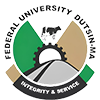THE EFFECT OF LAND CONVERSION ON SOIL QUALITY IN A SEMI-ARID ENVIRONMENT: THE CASE OF SCRUBLAND TO PERMANENT CULTIVATION
Keywords:
Land conversion, Soil quality, Scrubland, Semi-arid environmentAbstract
The study assessed the effects of land conversion in a semi-arid environment. Remote
Sensing, GIS and field-based technologies were integrated to assess the effects of Land
use/Land cover changes from 1986 to 2011on soil quality in parts of Katsina state,
northern Nigeria as an area demarcated for the study. Four Landsat satellite image scenes
with the same Path and Row numbers (189/051) for 1986, ETM of 1996, ETM+ of 2006
and ETM+ of 2016 were used for LULC change detection and analysis. Ground– truth
exercise was conducted to gather field data useful for the classification of the satellite
images of the area. GPS points used for both training sample set for the classification and
reference data for accuracy assessment were collected. Supervised Classification
procedure was used to classify the entire sub set images separately for 1986, 1996, 2006
and 2011. Post-classification comparison of classified land use/land cover statistics was
employed using cross tabulation approach in detecting and assessing changes of the
various LULC parameters in this study. It was observed that textural composition of the
soil at top and sub surface layers in this change scenario area vary from 78% to 80% with
1.63 and 0.98 standard deviations respectively. Mean silt values of soils in this change
scenario vary from 16% at the top layer and 14% at the sub surface layers, with 1.25 and
0.91 standard deviations. Similarly, mean clay values of soils at the top and sub surface
layers of soils remained 6% with 1.11 and 0.29 standard deviations. Satellite imageries
provided a good source of information for detecting changes in land use/land cover in the
study area.
Keywords: Lan






